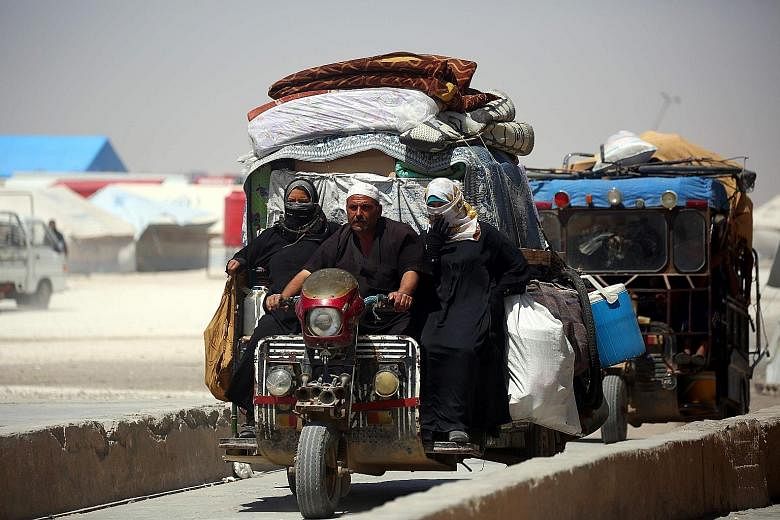BEIRUT • Images and reports from witnesses in the northern Syrian city of Raqqa suggest the US-led coalition battling ISIS militants there has used munitions loaded with white phosphorus, the use of which is prohibited in populated areas under international law.
Photographs and video clips posted online show blinding spots of light spreading outwards last Thursday night over what residents said was eastern Raqqa. By day, the images show low white puffs trailing tentacles of white smoke. Both are typical visual signatures of white phosphorus, which can be loaded into artillery shells.
Residents reached by text message reported similar bombardments last Friday.
The images were distributed by the Amaq news agency of the Islamic State in Iraq and Syria (ISIS), as well as a monitoring group called Raqqa Is Being Slaughtered Silently. ISIS has previously claimed that white phosphorous was used by US-led forces, as part of its efforts to discredit its enemies.
White phosphorus, along with other incendiaries, has been used by Syrian government forces battling insurgents in Aleppo and elsewhere. It is not illegal under international law for militaries to possess and use white phosphorus, and the US and other Western militaries say they use it mainly to create smoke screens to hide troop movements. But it can also be used as an incendiary weapon, setting very hot fires. And like thermite and napalm, it is proscribed in civilian areas by international law.
A US official acknowledged that US forces fighting ISIS in Iraq and Syria have access to white phosphorus munitions, but he said it was not being used against personnel. The official spoke on condition of anonymity because he was not authorised to discuss the matter.
It has not been determined whether the shells that appeared to contain white phosphorus landed in populated areas, but tens of thousands of civilians are believed to still be in Raqqa, even as many ISIS leaders have fled south to Mayadeen in Deir el-Zour province.
Unicef, the United Nations Children's Fund, warned that 40,000 children are believed to be trapped in the city.
The Syrian Democratic Forces (SDF), a group of Kurdish and Arab militias supported by the US-led coalition, began to attack Raqqa last Tuesday after a months-long campaign to cut it off.
The SDF said it seized yesterday the neighbourhood of Al-Romaniya, the first western district of ISIS-held Raqqa the Syrian fighters were reported to have taken and the second to fall into their hands.
However, there was less progress on the northern front of the battle, where the SDF has struggled to capture the Division 17 military base and an adjacent sugar factory used by ISIS to defend approaches into the city.
Doctors Without Borders issued a statement warning that civilians faced dangers, whether staying or trying to flee.
"Parents have to make an impossible decision," an emergency coordinator with the group, Ms Puk Leenders, said. "Either they stay in Raqqa, subjecting their children to increased violence and air strikes, or they take them over the front line, knowing they will need to cross minefields and may be caught in crossfire."
NYTIMES, AGENCE FRANCE-PRESSE, REUTERS

